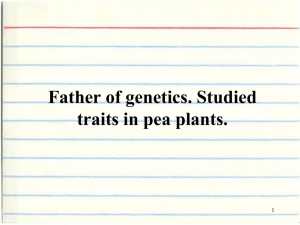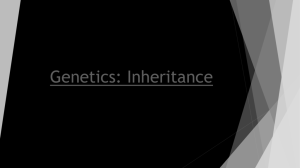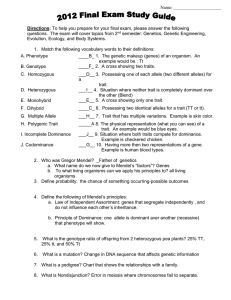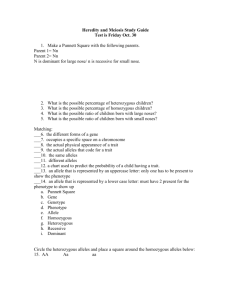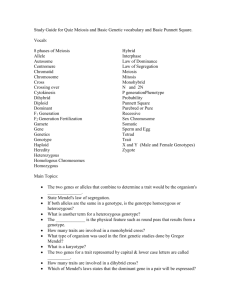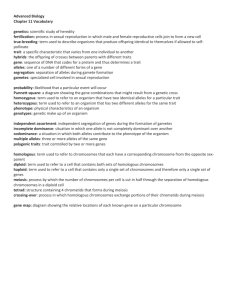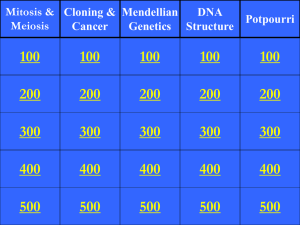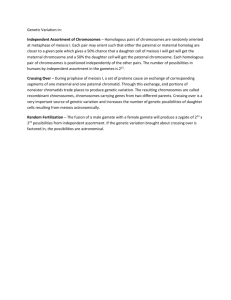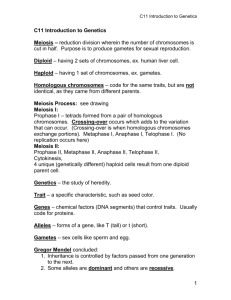Inheritance Vocabulary Review Name
advertisement
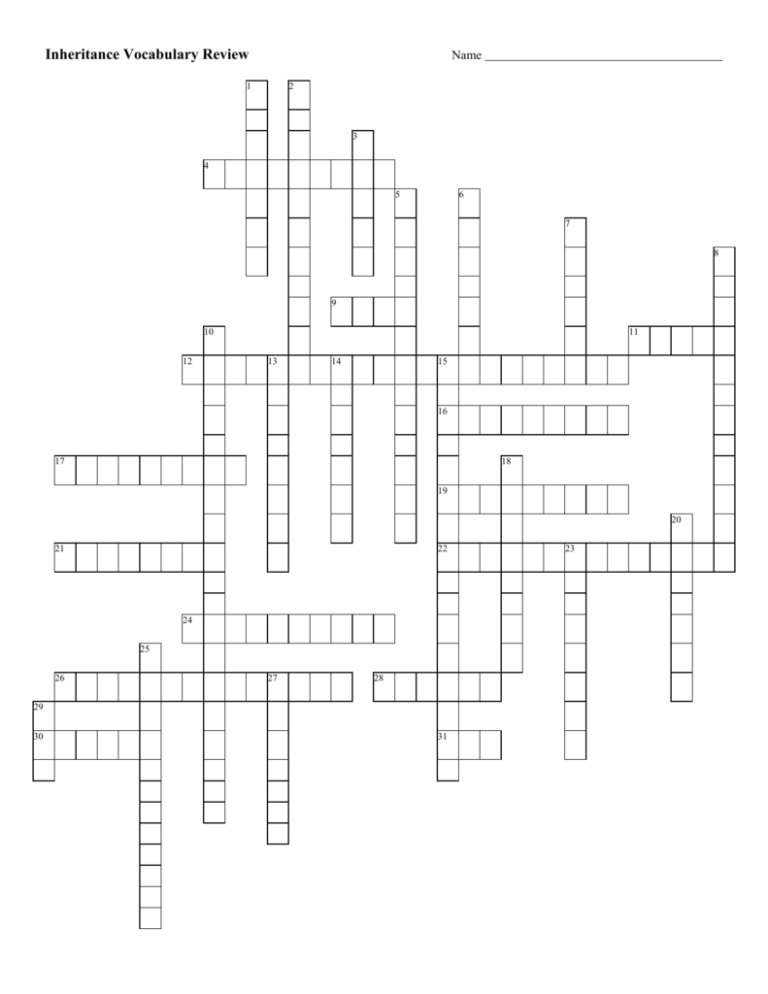
Inheritance Vocabulary Review Name 1 2 3 4 5 6 7 8 9 10 12 11 13 14 15 16 17 18 19 20 21 22 24 25 26 27 28 29 30 31 23 Across Down 4. an organized diagram or map of one person's chromosomes 9. A particular piece of genetic information. 11. Mr. Yu's first name! 12. the phenomenon described as the random organization of homologous chromosome pairs during Meiosis I, where the alighnment of one pair does not depend on or affect the alignment of another pair. 16. A type of trait that exists on the X-chromosome. It impacts people differently based on gender. 17. An observable physical trait. Both genetic and environmental factors can influence it. 19. A trait that is only expressed in homozygous genotypes and not in heterozygous genotypes. 21. A trait that is expressed in homozygous and heterozygous genotypes. 22. Two2 chromosomes that are similar in size, shape, and centromere position. These 2 line up together during 24. Having two of the same alleles for a gene. 26. The process that allows a chromosome to become duplicated. It occurs early in the process of meiosis 28. the structures in males that produce and store sperm 30. This type of cell is haploid and is the ultimate product of meiosis. 31. The molecule in which an individual stores their genetic information. 1. the structures in femles that produce and store eggs 2. The effect of 2 dominant alleles being expressed in a heterozygous combination. 3. The gamete produced by males. 5. A tool used to predict offspring genotype probabilities given parent genotype or phenotype information. 6. 1 before splitting. 7. One of 2 or more possible versions of the same gene. 8. The phenomenon that occurs when a pair of homologous chromosomes, close in proximity to each other, swap genetic information with each other, resulting in new allele sets on the recombined chromosomes 10. The effect of a heterozygous genotype showing a blended phenotype based on the 2 different alleles that coded for it. 13. A diagram or map that tracks the inheritance of a trait or disease in a family. 14. This describes a cell that has two sets of chromosomes. 15. These are what split during 18. A combination of two or more alleles that determine a particular trait. 20. This describes a cell that has one set of chromosomes. 23. One of these becomes four unique gametes at the end of meiosis. 25. A pair of alleles that are not the same. 27. A genetic condition in which there are 3 chromosomes where there shoudl be a single pair. 29. The gamete produced by females.
